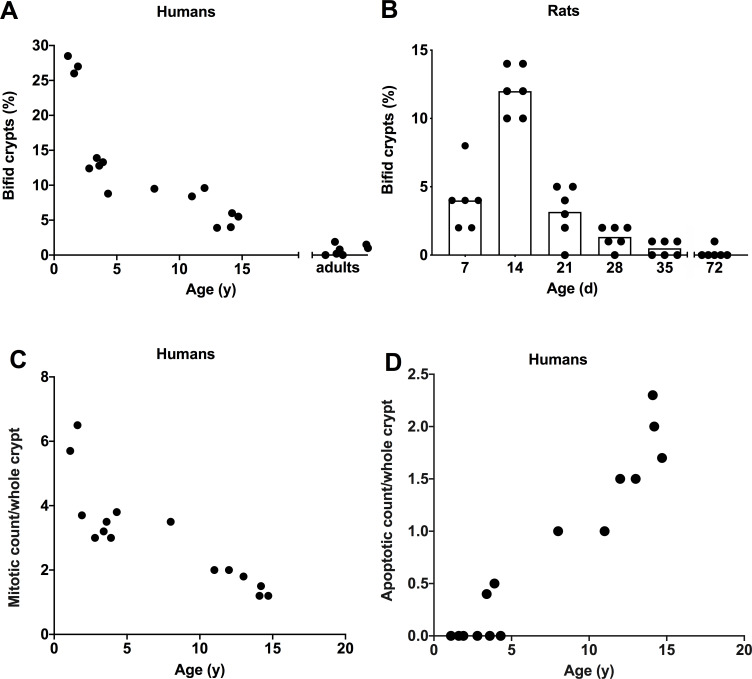Figure 2.
Age dependence of intestinal crypt fission was examined in (A) 15 infants, children and teenagers/adults, and (B) rats in litters of 7, 14, 21, 28, 35 and 72 days of life. (A) Crypt fission as a percentage of bifid crypts on the y axis versus age on the x axis. Crypt fission was enumerated as the number of bifid crypts in a total of 100–150 whole crypts for each individual. (B) Percentage of bifid crypts versus age in rats. Crypt fission was high during infancy and declined during childhood in humans and young rats. Statistical analysis was performed using linear regression model in (A), and for both humans and rats crypt fission peaked during infancy (linear regression, p<0.001). (C) Mitotic count per crypt (continuous linear regression, p<0.0001) and (D) apoptotic count (continuous linear regression, p<0.0001) per crypt in humans. Mitotic count was high during infancy and decreased throughout childhood. In contrast, apoptotic count was zero until 3 years of age and increased exponentially during childhood.

